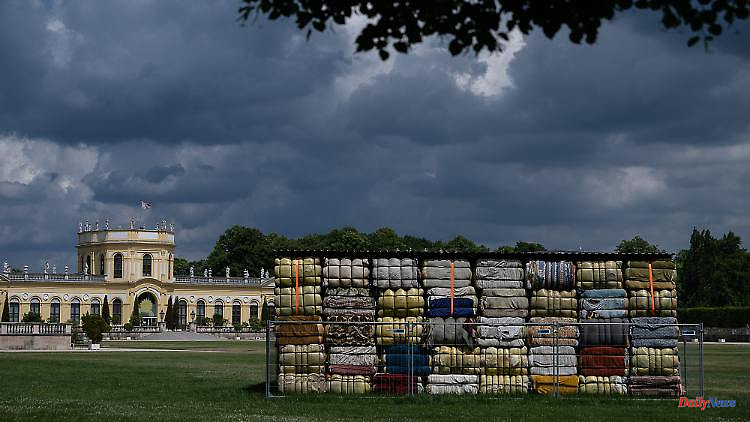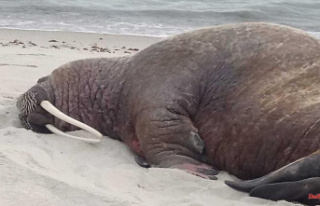Documenta fifteen will be different from its 14 predecessors. The Indonesian curatorial team relies on artist collectives from all over the world instead of big names. The focus is on dynamic processes and interaction.
The Documenta in Kassel is considered the most important art show in the world, but the tension has rarely been as great as in this 15th year. Few people know what visitors to the "World Art Show" will be able to see from this weekend. Above all, one thing is clear: this Documenta will be different. For the first time, not an individual is curating, but a collective. For the first time these curators come from Asia.
When the Ruangrupa group was awarded the contract in 2019, the art world rubbed its eyes in amazement: the artist collective from Jakarta was so unknown that there was not even a Wikipedia entry. When Ruangrupa explained their artistic concept in 2020, museum people, gallery owners and columnists got to know the Indonesian word for a rice barn: "Lumbung" in the island state is the word for a communal barn in which the surplus harvest is stored for the benefit of the community. At the Documenta, the artists want to "practice lumbung together".
This documenta said goodbye to many things: the stars with big names, the tight time constraints of 100 days, the locational commitment to a town in northern Hesse, the commissioned works. Instead, Ruangrupa has invited other collectives around the world to co-curate.
Paintings, sculptures, performances, films - there will probably be all of that at Documenta fifteen, but it's all about the immaterial: the process, the vision, the commitment. Among the participants is a Danish organization that supports refugees with legal advice and language courses, a group from Bangladesh that tries to avoid waste, beekeepers from Kassel and allegedly also a compost heap.
A floating example of the Documenta concept will sail towards the exhibition during the first few weeks. The "citizenship" of the Berlin Center for Art and Urbanistics carries the idea during a 55-day trip across rivers and canals with cultural events from place to place to Kassel. "The Documenta is about topics that go beyond classic art forms," explained the center's co-founder Matthias Einhoff. The vehicle is built from the former roof of the center, under which cultural projects have been developed for years. The "citizenship" is also sustainably designed in the sense of the Documenta with regenerative drive, regional supply and grassroots-oriented actions.
Documenta fifteen should not only be different from its predecessors, but also more expensive - especially because of the Corona measures. Kassel's Lord Mayor Christian Geselle had already announced this in July 2021. According to calculations, the already increased budget of 42 million euros could increase by a seven-digit amount, it said. The city of Kassel and the state of Hesse, as shareholders, agreed to each pay half of this amount if necessary.
A look at the figures also underscores the development of the Documenta from the first large and comprehensive exhibition of modern art in West Germany after the end of the Second World War to one of the world's most important exhibition series for contemporary art. Started in 1955 in bombed-out Kassel, the budget was 379,000 German marks. The exhibition had 130,000 visitors at the time. For the most recent Documenta 14 in 2017, the approved budget was 39 million euros. The exhibition attracted around 891,500 people to Kassel, and 339,000 more to the second location in Athens - a visitor record.
At the time, however, the twin Documenta also caused a lot of trouble and a financing gap of more than seven million euros in the annual financial statements, which the city and state had to fill. At the 15th edition, a dark shadow could quickly overtake the discussion of art at the documenta again. At the beginning of the year, largely unfounded accusations of anti-Semitism were leveled at the curators, which quickly developed into a huge debate with the dynamic nature of this topic.
Clumsy reactions and a little sensitive handling of the Central Council of Jews acted as accelerators. A series of discussions intended to calm people down has been cancelled. Those involved, including Minister of State for Culture Claudia Roth, are struggling to find a balance between "anti-Semitism has no place at the documenta", "freedom of art is a central point" and "origin alone cannot determine what is shown and what is not". The next 100 Documenta days will show whether this will succeed.
The exhibition, which runs until September 25, has been open to trade visitors and journalists since Wednesday. Federal President Frank-Walter Steinmeier, Hesse's Prime Minister Boris Rhein and the Ambassador of the Republic of Indonesia, Arif Havas Oegroseno, are expected to attend the official opening on June 18th. It is the prelude to another Documenta, which the curatorial team says is just a beginning. "Documenta fifteen begins the construction of a long-term lumbung - a repository of collective resources - to sustainably empower artist collectives around the world," Ruangrupa said.












